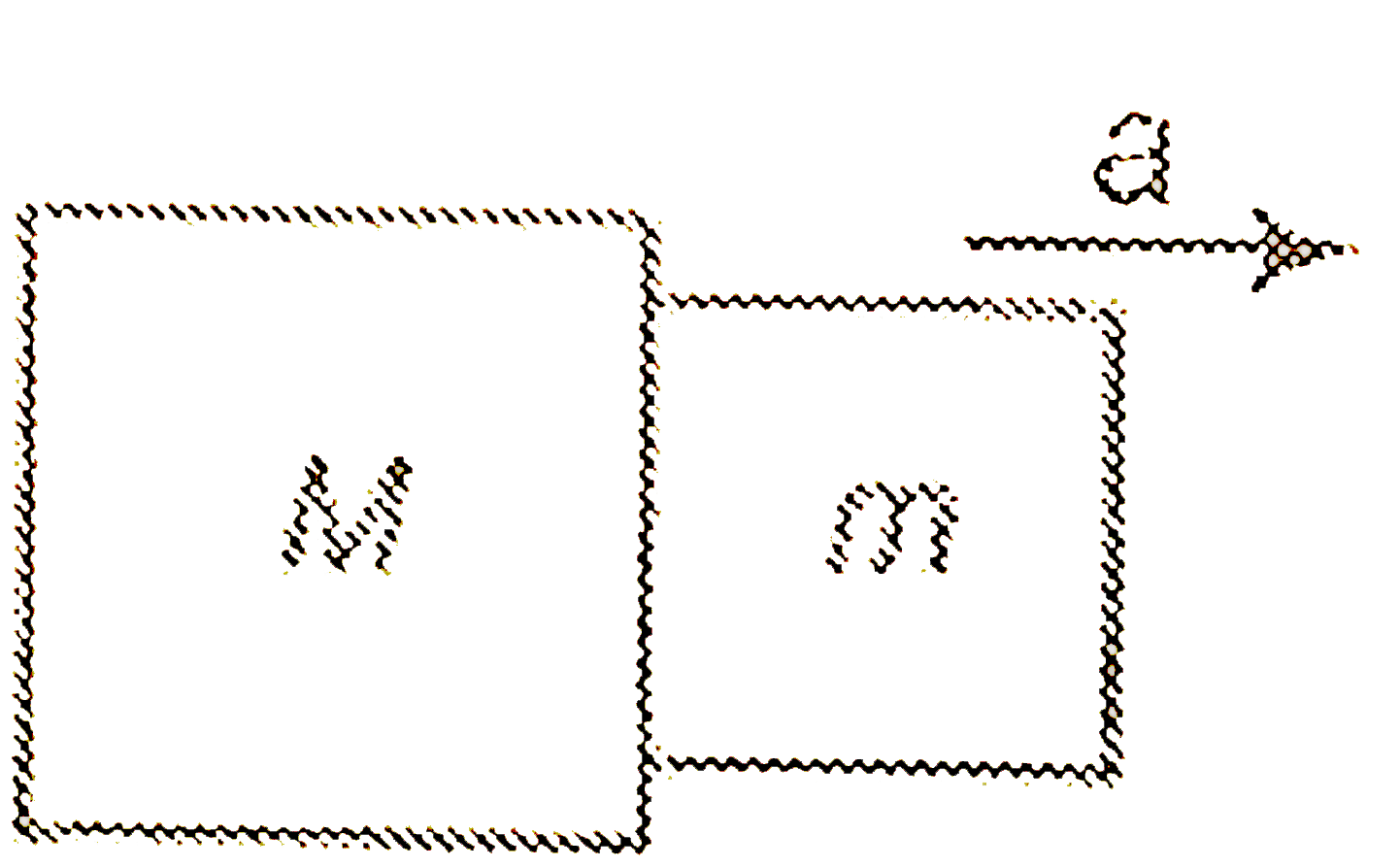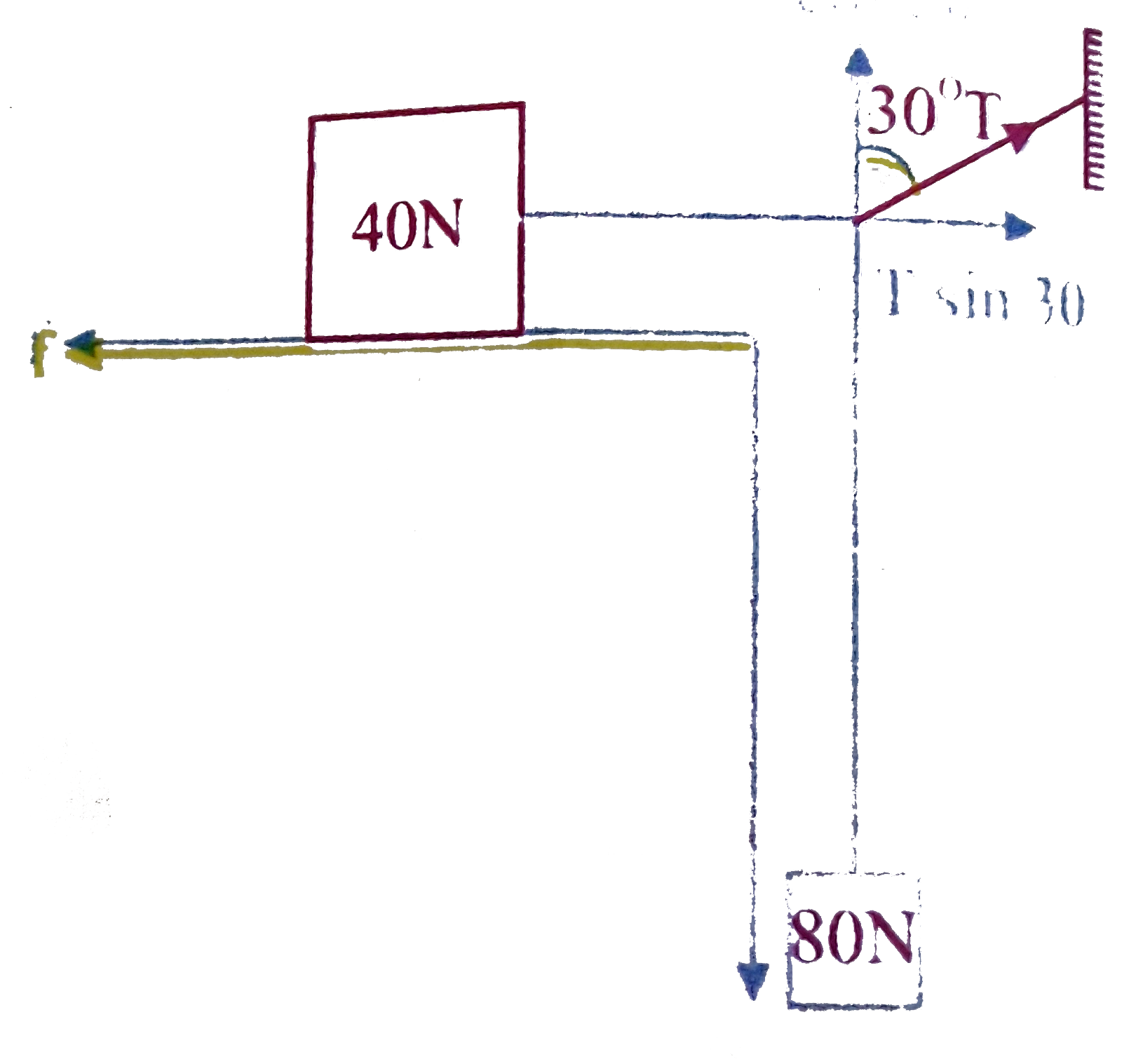A block on a horizontal slab is moving horizontally with a simple harmonic motion of frequency two oscillations per second. If the coefficient of static friction between block and slab is 0.5, then the amplitude of the oscillation will be (if the block does not slip along the slab)
3.3 cm
3.5 cm
3.15 cm
7 cm
The correct Answer is:C
To solve the problem step by step, we will follow the reasoning laid out in the video transcript:
Step 1: Understand the Problem
We have a block on a horizontal slab that is undergoing simple harmonic motion (SHM) with a frequency of 2 oscillations per second. The coefficient of static friction between the block and the slab is given as 0.5. We need to find the maximum amplitude of the oscillation such that the block does not slip on the slab.
Hint: Identify the key parameters: frequency, coefficient of static friction, and the relationship between force and motion.
Step 2: Identify Forces Acting on the Block
In SHM, the restoring force acting on the block can be described by Hooke's Law, which states that the force is proportional to the displacement from the equilibrium position. The force exerted by the spring can be expressed as:
F=kx
where k is the spring constant and x is the displacement from the equilibrium position.
The frictional force that prevents slipping is given by:
Ffriction=μsmg
where μs is the coefficient of static friction, m is the mass of the block, and g is the acceleration due to gravity.
Hint: Write down the expressions for the forces involved.
Step 3: Set Up the Equation for No Slipping Condition
For the block to not slip, the maximum static friction must be equal to the maximum restoring force at the amplitude A:
μsmg=kA
Hint: Relate the forces using the condition for static friction.
Step 4: Relate Spring Constant to Angular Frequency
The spring constant k can also be related to the angular frequency ω of the oscillation:
k=mω2
where ω=2πf.
Hint: Use the relationship between frequency and angular frequency.
Step 5: Substitute and Rearrange
Substituting k into the friction equation gives:
μsmg=mω2A
Canceling m from both sides (assuming m≠0):
μsg=ω2A
Now, we can solve for A:
A=μsgω2
Hint: Rearrange the equation to isolate A.
Step 6: Calculate Angular Frequency
Given the frequency f=2 Hz, we can calculate ω:
ω=2πf=2π×2=4π
Thus,
ω2=(4π)2=16π2
Hint: Calculate ω using the frequency provided.
Step 7: Substitute Values
Now substitute μs=0.5, g=10m/s2, and ω2=16π2 into the equation for A:
A=0.5×1016π2
A=516π2
Step 8: Calculate Amplitude
Now, we can compute the numerical value of A:
A≈516×9.87≈5158≈0.0316m
Converting to centimeters:
A≈3.16cm
Hint: Perform the final calculation to find the amplitude in centimeters.
Final Answer
The amplitude of the oscillation will be approximately 3.16 cm.
We have a block on a horizontal slab that is undergoing simple harmonic motion (SHM) with a frequency of 2 oscillations per second. The coefficient of static friction between the block and the slab is given as 0.5. We need to find the maximum amplitude of the oscillation such that the block does not slip on the slab.
In SHM, the restoring force acting on the block can be described by Hooke's Law, which states that the force is proportional to the displacement from the equilibrium position. The force exerted by the spring can be expressed as:
F=kx
where k is the spring constant and x is the displacement from the equilibrium position.
Ffriction=μsmg
where μs is the coefficient of static friction, m is the mass of the block, and g is the acceleration due to gravity.
For the block to not slip, the maximum static friction must be equal to the maximum restoring force at the amplitude A:
μsmg=kA
The spring constant k can also be related to the angular frequency ω of the oscillation:
k=mω2
where ω=2πf.
Substituting k into the friction equation gives:
μsmg=mω2A
Canceling m from both sides (assuming m≠0):
μsg=ω2A
Now, we can solve for A:
A=μsgω2
Given the frequency f=2 Hz, we can calculate ω:
ω=2πf=2π×2=4π
Thus,
ω2=(4π)2=16π2
Now substitute μs=0.5, g=10m/s2, and ω2=16π2 into the equation for A:
A=0.5×1016π2
A=516π2
Now, we can compute the numerical value of A:
A≈516×9.87≈5158≈0.0316m
Converting to centimeters:
A≈3.16cm
The amplitude of the oscillation will be approximately 3.16 cm.
Topper's Solved these Questions
Similar Questions
A block is on a horizontal surface (a shake table) that is moving back and forth horizontally with simple harmonic motion of frequency 2.0 Hz. The coefficient of static friction between block and surface is 0.45. How great can the amplitude of the SHM be if the block is not to slip along the surface?
View SolutionA block is kept on a horizontal table that is executing simple harmonic motion of frequency v in the horizontal plane. The coefficient of static friction between the block and the table is μ. Determine the maximum amplitude of the table for which the block does not slip on the surface of the table.
View Solution
Knowledge Check
The coefficient of static friction between the two blocks is 0.363. What is the acceleration of block 1 so that block 2 does not fall ?
 A6ms−2B12ms−2C18ms−2D27ms−2
A6ms−2B12ms−2C18ms−2D27ms−2A body is on a rough horizontal surface which is moving horizontally in SHM of frequency 2Hz. The coefficient of static friction between the body and the surface is 0.5. The maximum value of the amplitude for which the body will not slip along the surface is approximately
A9cmB6cmC4.5cmD3cmA block of mass 0.1 kg is held against a wall by applying a horizontal force of 5 N on the block. If the coefficient of friction between the block and the wall is 0.5, then the magnitude of the frictional force acting on the block is
A2.5 NB0.98 NC4.9 ND0.49 N
A block is kept on a horizontal table. The stable is undergoing simple harmonic motion of frequency 3Hz in a horizontal plane. The coefficient of static friciton between block and the table surface is 0.72. find the maximum amplitude of the table at which the block does not slip on the surface.
View SolutionA block is kept on a horizontal table. The table is undergoing simple farmonic motion of frequency 3Hz in a horizontal plane. The coefficient of static friction between the block and the table surface is 0.72. find the maximum amplitude of the table at which the block does not slip on the surface g=10ms−1
View SolutionA block on table shown in is just on the edge of slipping Find the coefficient of static friction between the blocks and table
 .
.
View SolutionA block is on horizontal slab which is moving horizontally and excuting S.H.M. The coefficient of static frication between block and slab is μ. If block is not separated from slab then determine range of angular frequency of oscillation.
View SolutionA block of mass 0.1 is held against a wall applying a horizontal force of 5N on block. If the coefficient of friction between the block and the wall is 0.5, the magnitude of the frictional force acting on the block is:
View Solution
